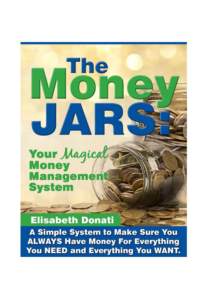So there you are, approval in hand from your local school board to find a financial literacy curriculum, excited that you finally have the green light to teach your students about money and investing. But where do you begin? How do you compare one program with another? What should the ultimate financial education curriculum contain in terms of topics and lessons?
These are all great questions and finding the right financial education program can be daunting if you don’t know what a great financial education should contain in the first place. Let’s see if I can help make it a wee bit easier for you to find the program you need to prepare your students to handle money wisely.
Don’t Make This Mistake – Remember…Context before Content
Most people start thinking ‘content’ before anything else. What does the program teach, what are the lessons, etc. Wrong, wrong, wrong.
The first question you need to get answered about any financial education curriculum is, What is the delivery system used for the curriculum? Let me explain.
There are hundreds of money curriculums available for kids and teens, both offline and online. The problem with most of them is that they are BORING! And boring doesn’t lend itself to learning or engaging students or instilling the critical money lessons and habits kids need to master their money as adults.
In our Train-the-Trainer programs, we refer to this as the CONTEXT. When you create a powerful learning context (i.e., environment) within which your students will learn and apply the lessons, you have a better than average chance of them actually learning AND retaining the information.
First Requirement – The Context Must Be Fun!
What exactly makes financial education fun? Well, music for starters, and a playful atmosphere and colors and activities. Think back to times when you had the most fun. Do you remember the event in a lot more detail than events that weren’t so much fun? Exactly. And here’s the thing about combining FUN and MONEY…it makes the topic seem less stressful to your students.
The majority of kids in America understand that money can be a stressful substance…they watch their parents fight over it, stress over it, experience the lack of it in many ways. What a wonderful contrast to show the kids that money can be looked at as a game with rules and if you learn to use the rules, you can win the game…regardless of which side of the railroad tracks you grew up on, so to speak.
Second Requirement – Assets and Passive Income
Many financial education programs focus more on NOT getting into financial trouble than how to ensure that you always have plenty of money for everything you need and want in life.
Don’t get me wrong, we do need to teach kids about credit cards, credit and debt but not just the bad aspects of it. In our Camp Millionaire programs, we have a debate called Good Debt/Bad Debt where the kids are given a bunch of items that have been purchased using credit/debt. They have to decide which ones are good debt and which ones are bad debt.
Oh, you want to know how you know? Well…it’s easy. Bad debt is debt YOU are paying the debt down (that last pair of jeans you put on your credit card is bad debt) and good debt is debt that other people pay down for you (the rental income on your rental property or business income that pays your business credit line). Too many kids are only taught that debt is bad. This often keeps them from knowing how to take advantage of great investment opportunities later on.
So, in addition to teaching kids how to stay OUT of trouble, teaching kids about investing in assets that produce passive income is the main road to financial freedom is a critical lesson. Steer clear of any financial curriculum that is missing this important component.
Third Requirement – Focus on Getting A Job – NOT!
Most of us were brainwashed in school to think that we had to grow up and get a job to support ourselves and our families but this is not what a great financial curriculum espouses. It must incorporate some type of focus on entrepreneurship and business skills.
Raising adults that think that the only way to have money is to earn it (as opposed to making it) is abuse. It shuts down their creativity, puts them perpetually in a ‘gotta have a job’ mentality and makes them dependent on having a job for the rest of their lives.
Instead, why not teach our kids that having a job (being an employee) is just A way, not THE way, to be financially successful and in my opinion, it’s the least appealing way. Why? Because as long as you have an employer, you can never really call your own shots.
Now we all know adults who have no desire to own their own business. They like going in at 9 am and leaving at 5 pm and having the weekends off. But lots of these people also complain about being chained to their jobs.
What if kids were raised thinking that they could create their own way from the get go? What if we encouraged their creativity in terms of coming up with products, programs and services that serve humanity? Just imagine how different the world would be. Fewer whining adults screaming for jobs and more adults who just went out and created the money they needed to live the lives they wanted to live.
Fourth Requirement – Movement and (e)Motion
Let’s face it, human being learn best when they are moving and emoting. Our most vivid memories are events we remember in our bodies…this is called learning kinesthetically. So much education is delivered auditorily (lecture) yet studies show that less than 11% of us learn best this way. We learn best by doing and seeing, i.e., visually and kinesthetically.
If the programs you’re looking at are primarily lecture based, with a worksheet or two, leave it be. Your students will be bored and won’t remember much about the lesson except that is was boring. One of my favorite sayings is, Physical is Memorable. The more physical your programs and lessons are, the more memorable they will be to your students. And the more your students remember the lessons, the greater the chances that they actually apply the critical financial lessons to their own lives.
Fifth Requirement – Content
OK, now we can talk about content. Great financial education programs should include basic saving and investing topics/lessons and a whole lot more in my opinion. I’m going to use our Money Game Principles (aka, rules to the money game) to share with you what I think every financial program needs to contain. I’ve left the principles blank (and given you the answers) as this is one of the contests we do in our programs. All of these principles are printed on 11 x 17 laminated sheets and put on the walls. The first student who gets all of the answers (they are up, moving around the room with upbeat music going) gets five moola!
1. Financial freedom is your _________. (choice)
2. You are the CEO of your life; financial _________ is your responsibility. (freedom)
3. Your thoughts, __________ and attitudes determine your wealth potential. (beliefs)
4. Being _______ is a temporary financial condition, being _______ is a state of mind. (broke, poor)
5. _________ it, _________ it, ___________ it down. (see, say, write)
6. Life is an adventure; let __________ be your guide. (passion)
7. To be financially successful, learn the _____________ of money. (language)
8. Money is a ___________ to reach your dreams. (tool)
9. Money buys you stuff, not _______________. (happiness)
10. Make money grow by putting it to ___________ for you. (work)
11. Pay yourself _____________. (FIRST!!!)
12. To create financial freedom, ______ the “energy” of money wisely. (invest)
13. People don’t _____ to fail, they fail to ______. (plan, plan)
14. It’s not how much money you make that’s important, it’s how much you _______. (keep)
15. If you can’t afford it in _______ , you can’t afford it at all. (cash)
16. Save early, save __________. (often)
17. Financial success comes from managing __________, not avoiding it. (risk)
18. Interest is only ___________ when you’re _____________ it. (interesting, receiving)
19. Don’t put all your financial ___________ into one basket. (eggs)
20. Invest with your head, not your __________. (heart)
21. Assets ________ you, liabilities ________ you. (feed, eat)
22. It is better to tell your money where to _____ than to ask where it _______. (go, went)
23. Only ____________ money when it’s going to ________ you money. (borrow, make)
24. People aren’t judged by their _________, but by the sum of their _________. (abilities, choices)
25. If you don’t know where you’re ___________, any road will take you there. (going)
26. Creating Financial Freedom is simply a matter of developing the right _______. (habits)
Extra Credit – Accelerated Learning Techniques
If the program you’re looking at contains the first five requirements above, you’re well on your way to finding a great program. They ARE out there.
But…if you want the best possible financial education experience for your students, regardless of whether they are kids, teens or adults, make sure you can teach the program using accelerated learning techniques. We talked about this above (visual, auditory and kinesthetically) and I can’t emphasize enough how important teaching this way is to your program’s success. For more information, check out our webpage on accelerated learning.
In all of our Creative Wealth Financial Education Train-the-Trainer workshops, you not only learn the Camp Millionaire program and how to teach The Money Game, you also learn the high-powered, highly-effective teaching techniques that make our programs work so well.
Summary of How to Pick a Financial Education Curriculum
1. It’s gotta be fun.
2. It’s gotta teach kids about investing in assets.
3. It’s gotta teach kids that getting a job is not THE option, but A option, i.e., entrepreneurship is a must-have component of your financial education program.
4. Make sure the program is full of movement. Activities that produce different types of emotion help ingrain the lessons in the child’s cells.
5. Make sure the program is full of great content.
6. Bonus…by using accelerated learning techniques to teach the program, you will be light years ahead of the pack.
Hope this has been helpful. Though we are quite biased when it comes to our own programs, there are others out there that meet these requirements. Good luck in your hunt and we’re always happy to answer any questions about Camp Millionaire and our newly launched The Money Game.
Now go out there and change some lives!





Thank for the great article. I was especially upset to find that that only 11% learn through education delivered by lectures. I wonder if this is partly due to the impact of high technology that has diminshed our attention span, i.e., the constant sensory and information overload that is the result of constant exposure to computers, iPods, cell phone, email, video games,etc. That which is virtual has become reality. When the mind is subjected to sensory overload, it results in increased stress and reduced concentration and everything suffers.
Your comment on instilling in children “job creation” instead of “job dependency” made me rethink my constant nagging of my daughter Kendra to get a “good” job. I am going to make sure she reads this article and focus on “creating” a good job for herself.
Thanks, Ken
Thanks Ken. The studies on learning styles for human beings is fascinating and really make you wonder if the people in charge of our education systems (as a whole) really know what they are doing. In fact, we know that they don’t.
In my camps, kids are taught using all three learning styles: auditory, visual and kinesthetic. They can’t NOT get it. It’s a beautiful thing.
One of the best compliments I ever got was from a young man who struggles in school. He asked his mom, after attending day one of our weekend Camp Millionaire, “Mom, why can’t all teachers teach like Elisabeth?” Ah, isn’t that wonderful? This comment was not about me…it was about accelerated learning.